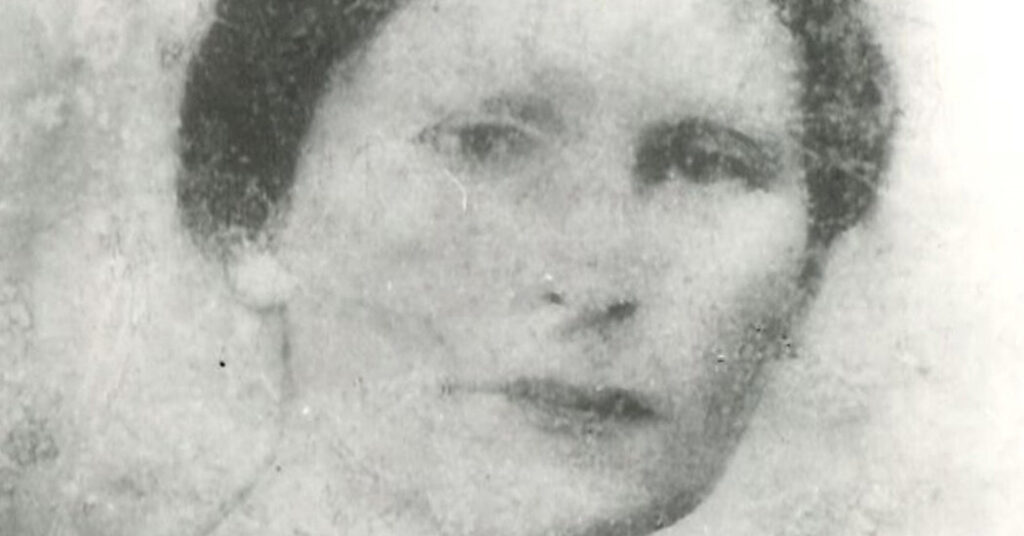This article is part of Overlooked, a series of obituaries about remarkable people whose deaths, beginning in 1851, went unreported in The Times.
Sigmund Freud, Carl Jung — and Sabina Spielrein. As the field of psychoanalysis was emerging in the early 1900s, those scientists were linked in a triangular dialogue that included letters, scholarly articles and debates. Yet for decades, Spielrein’s contributions were overshadowed by the two men. Only recently has her role begun to be fully acknowledged.
In 1911, Spielrein presented a bold theory before the Vienna Psychoanalytic Society at an event hosted by Freud.
During her talk, she proposed that the same inner forces that drive people to love, desire and create can also make them want to destroy — even themselves — a notion that became the focus of her 1912 paper “Destruction as the Cause of Becoming.”
When Freud published his essay “Beyond the Pleasure Principle” (1920), he gave a label to the urge — Thanatos, or the death drive — that acted in opposition to the sex drive, which he called Eros.
He cited Spielrein in a footnote and, for many decades since, she remained just that, despite publishing more than 35 papers in three languages and making significant contributions to the fields of psychoanalysis and child psychology.
Today, however, scholars credit her with ideas that predated the work of the field’s most famous thinkers — including themes that echoed in feminist theory of the 1960s and brought early insights into language development in children.
“People have increasingly acknowledged that within her work, there were the seeds of ideas that then became much more acceptable and mainstream 50, 60 and 100 years later,” John Launer, who wrote “Sex Versus Survival: The Life and Ideas of Sabina Spielrein” (2014), said in an interview.
Spielrein’s importance came to light after her diary and letters were published in the 1980s. Those documents revealed that she’d had extensive contact with Freud as well as a romantic relationship with the Swiss psychiatrist Carl Jung.
“Early scholarship was focused on her work in relation to other people’s work, like, ‘What did Jung take from her, and what did Freud take from her?’” said Klara Naszkowska, an adjunct professor in women’s and gender studies at Montclair State University in New Jersey and founding director of the International Association for Spielrein Studies in Poland in 2017. “Now, we are trying to talk about her work separate from other people’s work.”
Spielrein’s theories were an important precursor to the 1960s movement known as écriture féminine, which focused on feminine agency and creativity.
“The main themes of Spielrein’s theory — motherhood, female body, embodied language, touch, ancient melody — all anticipate the domineering motifs in the écriture féminine writings,” Naszkowska said. “In her concepts, mothers are the source of all language, as opposed to the mute, powerless, deficient, unimportant femininity and motherhood,” presented in Western-European cultural thought at the time.
Spielrein was also recognized for her creative approach to linking psychoanalysis to other sciences, including biology and linguistics. “The Origin of the Words ‘Papa’ and ‘Mama,’” a paper she published in 1922, explored early childhood language development and predated similar ideas proposed in the 1940s by two of the established founders of the field of child psychoanalysis, Anna Freud — Sigmund’s daughter — and Melanie Klein.
Sabina Nikolayevna Shpilrain was born on Nov. 7, 1885, in Rostov-on-Don, Russia, to Nikolai Arkadyevich Shpilrain, a merchant, and Eva Marcovna Lyublinskaya, who was trained as a dentist. Her parents were Jewish, and her maternal grandfather and her great-grandfather were rabbis. (Sabina used the German transliterated version of her surname in her published work.)
As the eldest of five children in a wealthy family, Sabina was raised, along with her three brothers and her sister, to speak multiple languages and play music.
When her sister died of typhoid at age 6, Sabina had an emotional breakdown and was deemed a “hysteric.” She was admitted to the Burgholzli Psychiatric Clinic in Zurich when she was about 19 and was placed under the care of the Swiss psychiatrist and humanist Eugen Bleuler and his deputy, Carl Jung.
During treatments, Jung used a method of word association, a kind of precursor to talk therapy. Spielrein took an interest in it and became curious about medicine. She made a rapid recovery and, within a few months, she applied to enter medical school at the University of Zurich, which was affiliated with Burgholzli.
Launer said Spielrein “developed a wild crush” on Jung. In the book “Sabina Spielrein and the Beginnings of Psychoanalysis: Image, Thought, and Language” (2019), edited by Pamela Cooper-White and Felicity Brock Kelcourse, Kelcourse wrote that Spielrein’s diary entries from 1909 to 1912 “reveal a young woman who was caught up with intense transference,” or a redirection of feelings toward her analyst that would otherwise have been aimed at a loved one.
“From her account, he seduced her,” Cooper-White said in an interview. “She writes in several places about how she was reluctant. To me it matches all the things we now know of the abuse of interns, or women in subordinate roles, who are exploited sexually by their mentors.”
A 1993 nonfiction book by John Kerr, “A Most Dangerous Method: The Story of Jung, Freud, and Sabina Spielrein,” depicted Jung’s relationship with Spielrein as part of a perilous psychoanalytic dynamic, noting, “I find it at least plausible that the two stopped short of intercourse.”
David Cronenberg’s 2011 film adaptation of Kerr’s book, “A Dangerous Method,” starring Keira Knightley, with Michael Fassbender as Jung and Viggo Mortensen as Freud, dramatized a sexual affair.
“The ‘did she or didn’t she’ discourse is in my view a highly disrespectful distraction from her achievements as a professional and a thinker,” Launer said.
Cooper-White said the suggestion of impropriety led to Spielrein being written out of history, while the reputations of Jung and Freud remained intact.
Spielrein received a doctorate from the University of Zurich in 1911 and soon moved to Vienna to join Freud’s circle, “at once declaring her independence from Jung and establishing herself in the font of psychoanalysis as an original thinker,” Kelcourse wrote.
Spielrein became the second female member of the Vienna Psychoanalytic Society (after Margarethe Hilferding), of which Freud was the founder, and later joined psychoanalytic societies in Geneva and Russia, gave lectures at many universities and worked as an analyst and medical consultant.
In 1912 she married Pavel Sheftel, a physician; a year later, they had a daughter, Renata. She published many papers in 1913, including a landmark work, “Contributions to Understanding a Child’s Mind.”
World War I separated the family: Sheftel was called into service in his native Russia as a military doctor, and Spielrein took Renata to Switzerland, where she worked in several medical jobs, including as an eye surgeon. In 1920, she worked at the Rousseau Institute in Geneva, where she analyzed Jean Piaget, the school’s director, and influenced his work on child development.
She and Renata reunited with Sheftel in Russia in 1923, and had their second daughter, Eva, in 1926. Spielrein worked for the State Psychoanalytic Institute in Moscow and the First Moscow State Medical University in paedology — an emerging discipline that combined pediatrics and child psychology that would be the focus of the rest of her career.
In 1942, Spielrein and her two daughters were among an estimated 27,000 Soviet Jews rounded up in Rostov-on-Don and forced to the edge of a ravine. There, they were massacred by a Nazi murder squad.
The circumstances of her death were a mystery until Magnus Ljunggren, a Swedish journalist and professor of Russian literature, discovered her fate in 1983 by piecing together eyewitness testimonies. Although there is still some uncertainty about the precise moment of her death, Sabine Richebacher, a Spielrein biographer, places it on Aug. 11, 1942. She would have been 56.
Her contributions to science fell into near total oblivion until her diaries were discovered in Geneva in 1977. The Italian Jungian psychoanalyst Aldo Carotenuto subsequently published “A Secret Symmetry: Sabina Spielrein Between Jung and Freud,” a compilation of her writings, in Italian and English.
But, as Naszkowska, the scholar, noted: “She is still in the phase of being discovered.”
The post Overlooked No More: Sabina Spielrein, Visionary Lost Between Freud and Jung appeared first on New York Times.




